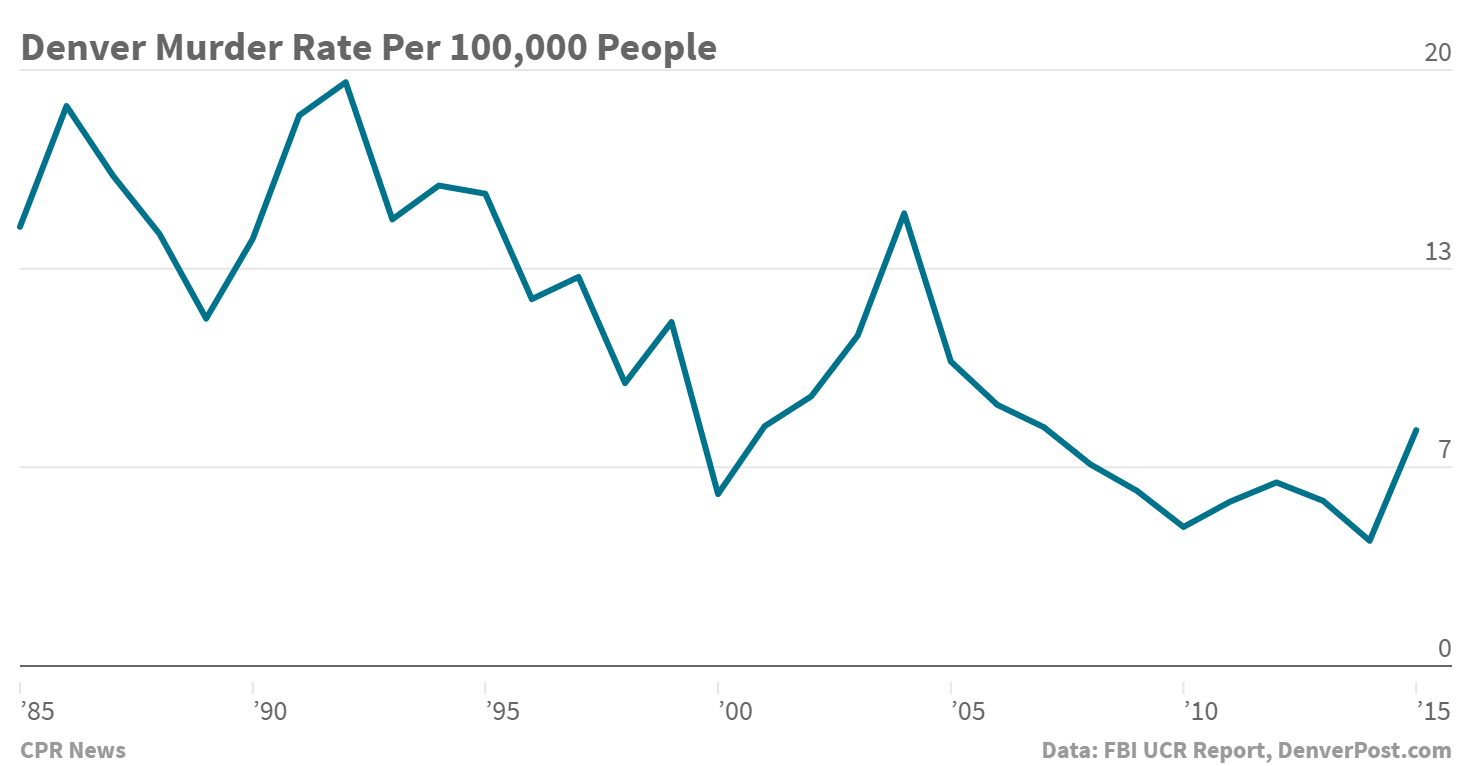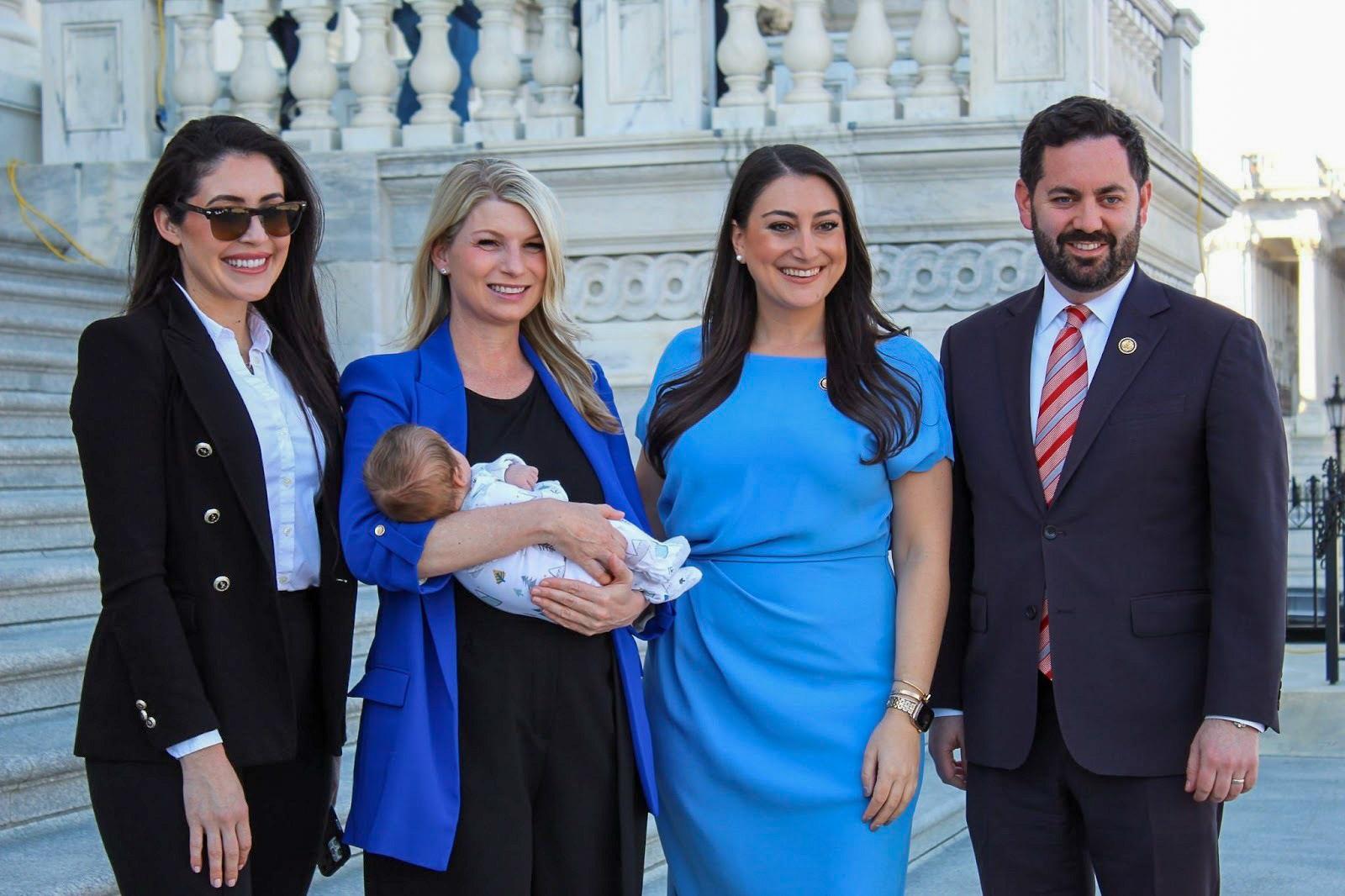
Mass shootings like the recent one in Orlando, Fla. are on the rise across the nation, and there's been a recent uptick in murders in large U.S. cities.
From 1982 to 2006, there were 40 mass shootings and 302 people killed, according to data compiled by Mother Jones. But from 2007 to now, there have been 41 such shootings and 369 deaths.
"The bottom line is that in the past 10 years, there has been roughly the same number of shootings and victims as the previous 25," Scott Phillips, a criminologist at the University of Denver, told Colorado Matters host Ryan Warner.

Those mass shootings include five in Colorado: two in Colorado Springs last fall, the 2012 Aurora theater shooting, 1999's Columbine High School shooting, and the 1993 Chuck E. Cheese massacre in Aurora.
But while it may feel like the United States is growing more violent, the murder rate is actually down significantly since the 1990s.
"A crime was high from about 1960 until the early 1990s. It started dropping in the early 1990s and has remained low," Phillips said. "The recent uptick might be the start of a new trend, or it might be a blip in what it's been a long-term decline."
Take Denver for example: In 1992, the murder rate was 20 per 100,000 people. By 2015, it had dropped to 8 per 100,ooo or by more than half.
Some cities, like Chicago, are dealing with a rash of murders this year and in some urban neighborhoods where gang activity is prevalent, residents still face daily threats of violence. Those neighborhoods continue to concern crime experts and make them wary of painting a rosy picture.
"There are definitely neighborhoods that are hurting," Phillips said. "[Crime] is often concentrated in the most disadvantaged neighborhoods. But that's always been the case."
Pinpointing The "Why" A Tough Task
There are many theories about why the murder rate overall has been dropping, including the removal of lead in paint and limits on the amount of lead in gasoline beginning in the 1970s.
Another argument is that mass incarceration in the 1990s took many dangerous criminals off the streets.
"It's not only that your incapacitating violent people, it's that the same violent person often commits several violent acts," Phillips said.
A more controversial theory posits that the legalization of abortion in the early 1970s reduced the young adult population about two decades later. That period -- the early 1990s -- coincided with the murder rate's decline.
"Not only do you have less people in their crime-prone years, the people who would have been born but were not would have often been born into some of the most disadvantaged circumstances," Phillips said.
Phillips did not endorse that theory, and added that criminologists are still puzzling over what led to the fall in crime.
"It's hard to say what's at the top the list. I don't think anyone has figured out exactly which theory matters the most," Phillips said.








